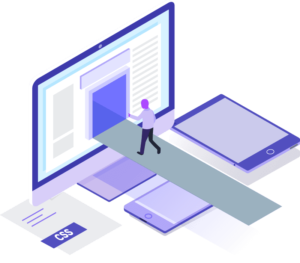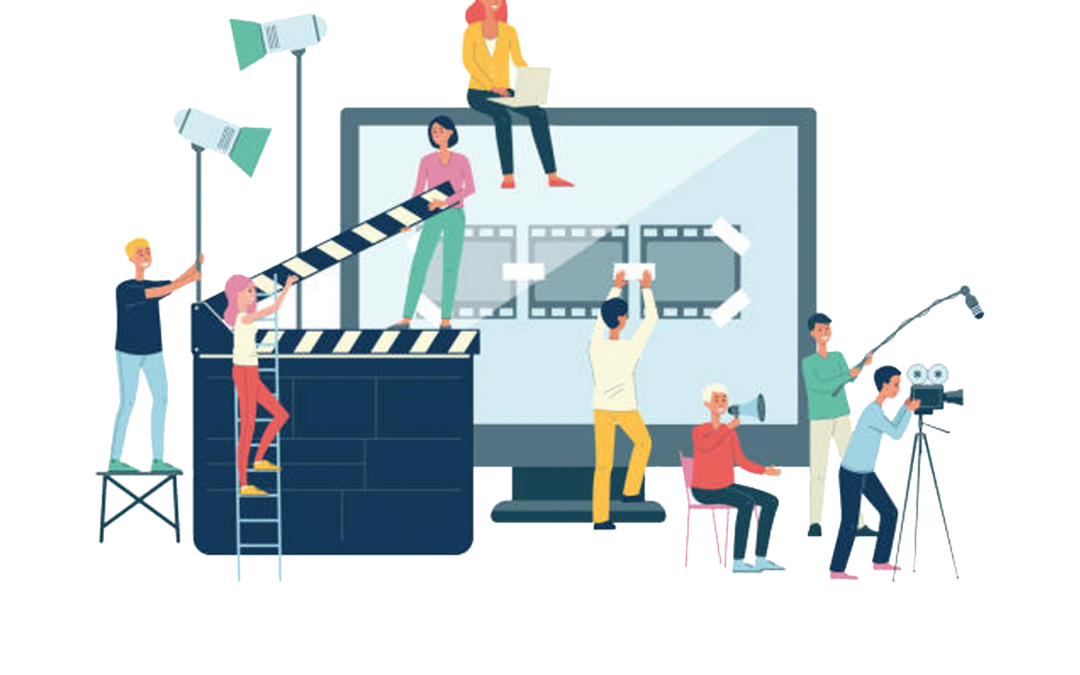Unleashing the Power of Graphics: How Graphic Design Can Boost Your Website’s Performance
In today’s digital age, your website’s design is often the first impression your audience gets of your brand. It’s crucial to make that first impression count, and one of the most effective ways to do that is through graphic design. The right graphics can make your website more visually appealing, easier to navigate, and more memorable to visitors. But that’s not all. Graphic design can also play a significant role in boosting your website’s performance. From improving user experience to increasing engagement and conversions, the power of graphics should not be underestimated. In this article, we’ll explore the ways in which graphic design can elevate your website’s performance and how you can effectively incorporate it into your digital marketing strategy. Get ready to unleash the power of graphics and take your website to the next level!
The importance of graphic design in website performance
Your website’s design is critical to its success. A website that looks professional, modern, and visually appealing is more likely to attract and retain visitors than one that looks outdated or poorly designed. But the importance of graphic design goes beyond aesthetics. In fact, the right graphic design can have a significant impact on your website’s performance in a variety of ways.
One of the most important ways graphic design can boost your website’s performance is by improving user experience. A well-designed website is easier to navigate, which means visitors are more likely to find what they’re looking for quickly and easily. This, in turn, can lead to increased engagement and conversions. Additionally, graphic design can help you establish a consistent brand identity across all of your digital channels, which can help build trust and credibility with your audience.
Another important aspect of graphic design is its ability to enhance your website’s SEO. By incorporating relevant and high-quality images, infographics, and other visual elements into your website, you can improve its overall SEO performance. This is because search engines like Google use visual elements as a ranking factor when determining how relevant and valuable a website is to its audience.
How graphic design affects user experience
As we mentioned earlier, one of the most important ways graphic design can boost your website’s performance is by improving user experience. But what exactly does that mean? User experience, or UX, refers to how easy and enjoyable it is for visitors to interact with your website. This includes everything from how quickly your website loads to how easy it is to find the information they’re looking for.
Graphic design plays a critical role in UX because it can help make your website more intuitive and user-friendly. For example, using clear and concise navigation menus, buttons, and calls-to-action can make it easier for visitors to find what they’re looking for and take action. Additionally, using high-quality images and other visual elements can make your website more engaging and memorable, which can help keep visitors on your site for longer periods of time.
The psychology of color in graphic design
When it comes to graphic design, color is one of the most powerful tools you have at your disposal. Not only can color help make your website more visually appealing, but it can also have a significant impact on how visitors perceive your brand and interact with your website. In fact, there is a whole field of study dedicated to the psychology of color and how it affects human behavior.
For example, using warm colors like red, yellow, and orange can help create a sense of urgency and excitement, which can be effective for calls-to-action and other conversion-focused elements. On the other hand, cool colors like blue and green can create a sense of calm and relaxation, which can be effective for building trust and credibility with your audience. Additionally, using contrasting colors can help make important elements stand out and draw attention to them.
Power of graphics that can boost website performance
When it comes to incorporating graphics into your website, there are a variety of different types to choose from. Some of the most popular types of graphics include:

Power of Graphics
High-quality images can make your website more visually appealing and engaging. They can also help break up text and make your content more scannable and easy to read.
Infographics
Infographics are a popular type of graphic that can help communicate complex information in a visually appealing and easy-to-understand way. They can be effective for a variety of purposes, from explaining complex concepts to showcasing data and statistics.
Videos
Videos are a highly engaging type of graphic that can help bring your brand to life and showcase your products or services in action. They can also be effective for building trust and credibility with your audience.
Icons
Icons are small, simple graphics that can help make your website more intuitive and user-friendly. They can be effective for buttons, calls-to-action, and other navigation elements.
While incorporating graphics into your website can be highly effective, there are some best practices you should keep in mind to ensure you’re using them in the best possible way. Some of these best practices include:
Keep it simple
When it comes to graphic design, less is often more. Instead of cluttering your website with too many graphics, focus on using a few high-quality ones that are strategically placed throughout your site.
Use high-quality images
Low-quality or blurry images can make your website look unprofessional and untrustworthy. Make sure any images you use are high-quality and properly optimized for the web.
Make it mobile-friendly
More and more people are accessing the internet on their mobile devices, which means it’s important to ensure your website’s graphics are optimized for mobile screens. This means using responsive design and properly sizing your graphics for smaller screens.
If you’re not a graphic designer yourself, you’ll likely need to hire one to help you create the graphics for your website. But how do you choose the right one for your needs? Here are a few tips to keep in mind:
Look for experience and expertise
When choosing a graphic designer, look for someone who has experience creating graphics for websites and who has expertise in your industry or niche.
Check their portfolio
Before hiring a graphic designer, be sure to check out their portfolio to see examples of their work. This can give you a good sense of their style and whether it’s a good fit for your brand.
Consider your budget
Graphic design can be expensive, so it’s important to consider your budget when choosing a designer. Be sure to get quotes from multiple designers to ensure you’re getting a fair price.
Tools and resources for creating graphics
If you don’t have the budget to hire a graphic designer, there are a variety of tools and resources available to help you create your own graphics. Some popular options include:
Adobe Creative Suite
For more advanced graphic design needs, Adobe Creative Suite is the industry standard. It includes a variety of tools, including Photoshop, Illustrator, and InDesign, that can help you create high-quality graphics for your website.
Case studies of websites with great graphic design
To get a better sense of power of graphics, design can impact your website’s performance, let’s take a look at a few case studies of websites with great graphic design.
Apple
Apple is known for its sleek and modern design aesthetic, and its website is no exception. The use of high-quality images and simple, intuitive design elements creates an engaging and memorable user experience.
Airbnb
Airbnb’s website is another great example of effective graphic design. The use of bright colors and playful illustrations creates a fun and inviting atmosphere that helps build trust and credibility with its audience.
Dropbox
Dropbox’s website is simple yet effective, using bold typography and contrasting colors to draw attention to important elements. The use of animations and other visual elements helps create an engaging and memorable user experience.
Finally, let’s take a look at some of the graphic design trends that are expected to be popular in the coming year.
3D design
3D design is becoming increasingly popular, as it allows designers to create more visually striking and engaging graphics that stand out from the crowd.
Bold typography
Bold typography is another trend (Power of Graphics) that’s expected to be popular in the coming year. Using large, bold fonts can help draw attention to important elements and make your website more visually appealing.
Dark mode
Dark mode is a trend that’s already gaining popularity, as it can help reduce eye strain and create a more immersive user experience. Expect to see more websites incorporating dark mode in the coming year.
In conclusion, graphic design is a powerful tool that can have a significant impact on your website’s performance. From improving user experience to increasing engagement and conversions, the right graphics can help take your website to the next level. By incorporating best practices, choosing the right designer, and staying up-to-date on the latest trends, you can unleash the power of graphics and build a website that truly stands out from the crowd.

Passionate knowledge seeker, Content Writer, budding Graphic Designer, Video Production Artist, associated with Cut & Paste. I wish to become more of what I am at present. Connect with me, I am social.

